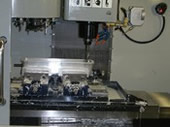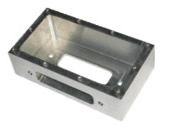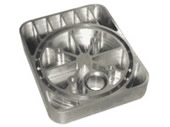CNC Milling & Turning
CNC milling is a cutting process in which material is removed from a block of material by a rotating tool. At first glance a CNC milling machine looks somewhat like a drill press with a cutting tool protruding down from a rotating spindle. Typically the cutting tool is moved in all three dimensions to achieve the desired part shape and the tool usually rotates about an axis that is perpendicular to the table that holds the material to be cut.
While the cutting tool turns, a computer is used to control the vertical (Z axis) and horizontal (X axis) motion of the cutter and the horizontal (X and Y axis) motion of the block of material. The cutter is guided to move through the material, removing portions of the material to create the desired part/shape.



CNC Milling has several advantages over other manufacturing processes. It is cost effective for short runs. Complex shapes and high dimensional tolerances are possible. Smooth finishes can be achieved. CNC milling can produce almost any 2D or 3D shape provided that the rotating cutting tools can reach the material to be removed. Examples of CNC milled parts include engine components, mold tooling, complex mechanisms, enclosures, etc.
Cost reduction options include reducing the amount of material removed, limiting complexity, avoiding intricate features and making shapes that are easy to hold.
At Fleming Electrical & Engineering Ltd, we provide a full CNC Milling and turning service and can tailor our service to your specification.
| The milling process can be applied to most rigid materials, hard plastics and other materials: | |||||||
| Aluminium | Titanium | Nylon | Acetal | ||||
| Stainless Steel | Sterling Silver | Polycarbonate | Carbon fibre | ||||
| Copper | Bronze | Polystyrene | Teflon | ||||
| Steel | Acrylic | ABS | |||||
| Brass | Fiberglas | PVC | |||||